- Home
- Quizzes
- My Quiz Activity
- Newsletters
- Sports Betting
- MY FAVORITES
- Add Sports/Teams
- SPORTS
-
NFL
- NFL Home
- Arizona Cardinals
- Atlanta Falcons
- Baltimore Ravens
- Buffalo Bills
- Carolina Panthers
- Chicago Bears
- Cincinnati Bengals
- Cleveland Browns
- Dallas Cowboys
- Denver Broncos
- Detroit Lions
- Green Bay Packers
- Houston Texans
- Indianapolis Colts
- Jacksonville Jaguars
- Kansas City Chiefs
- Las Vegas Raiders
- Los Angeles Chargers
- Los Angeles Rams
- Miami Dolphins
- Minnesota Vikings
- New England Patriots
- New Orleans Saints
- New York Jets
- New York Giants
- Philadelphia Eagles
- Pittsburgh Steelers
- San Francisco 49ers
- Seattle Seahawks
- Tampa Bay Buccaneers
- Tennessee Titans
- Washington Commanders
-
MLB
- MLB Home
- Arizona Diamondbacks
- Atlanta Braves
- Baltimore Orioles
- Boston Red Sox
- Chicago White Sox
- Chicago Cubs
- Cincinnati Reds
- Cleveland Guardians
- Colorado Rockies
- Detroit Tigers
- Houston Astros
- Kansas City Royals
- Los Angeles Angels
- Los Angeles Dodgers
- Miami Marlins
- Milwaukee Brewers
- Minnesota Twins
- New York Yankees
- New York Mets
- Oakland Athletics
- Philadelphia Phillies
- Pittsburgh Pirates
- San Diego Padres
- San Francisco Giants
- Seattle Mariners
- St. Louis Cardinals
- Tampa Bay Rays
- Texas Rangers
- Toronto Blue Jays
- Washington Nationals
-
NBA
- NBA Home
- Atlanta Hawks
- Boston Celtics
- Brooklyn Nets
- Charlotte Hornets
- Chicago Bulls
- Cleveland Cavaliers
- Dallas Mavericks
- Denver Nuggets
- Detroit Pistons
- Golden State Warriors
- Houston Rockets
- Indiana Pacers
- Los Angeles Clippers
- Los Angeles Lakers
- Memphis Grizzlies
- Miami Heat
- Milwaukee Bucks
- Minnesota Timberwolves
- New Orleans Pelicans
- New York Knicks
- Oklahoma City Thunder
- Orlando Magic
- Philadelphia 76ers
- Phoenix Suns
- Portland Trail Blazers
- Sacramento Kings
- San Antonio Spurs
- Toronto Raptors
- Utah Jazz
- Washington Wizards
-
NHL
- NHL Home
- Anaheim Ducks
- Arizona Coyotes
- Boston Bruins
- Buffalo Sabres
- Calgary Flames
- Carolina Hurricanes
- Chicago Blackhawks
- Colorado Avalanche
- Columbus Blue Jackets
- Dallas Stars
- Detroit Red Wings
- Edmonton Oilers
- Florida Panthers
- Los Angeles Kings
- Minnesota Wild
- Montreal Canadiens
- Nashville Predators
- New Jersey Devils
- New York Islanders
- New York Rangers
- Ottawa Senators
- Philadelphia Flyers
- Pittsburgh Penguins
- San Jose Sharks
- Seattle Kraken
- St. Louis Blues
- Tampa Bay Lightning
- Toronto Maple Leafs
- Vancouver Canucks
- Vegas Golden Knights
- Washington Capitals
- Winnipeg Jets
- NCAAF
- NCAAM
- Boxing
- Entertainment
- Lifestyle
- Golf
- MMA
- Soccer
- Tennis
- Wrestling
- More Sports
- RESOURCES
- My Account
- YB on Facebook
- YB on Twitter
- YB on Flipboard
- Contact Us
- Privacy Policy
- Terms of Service
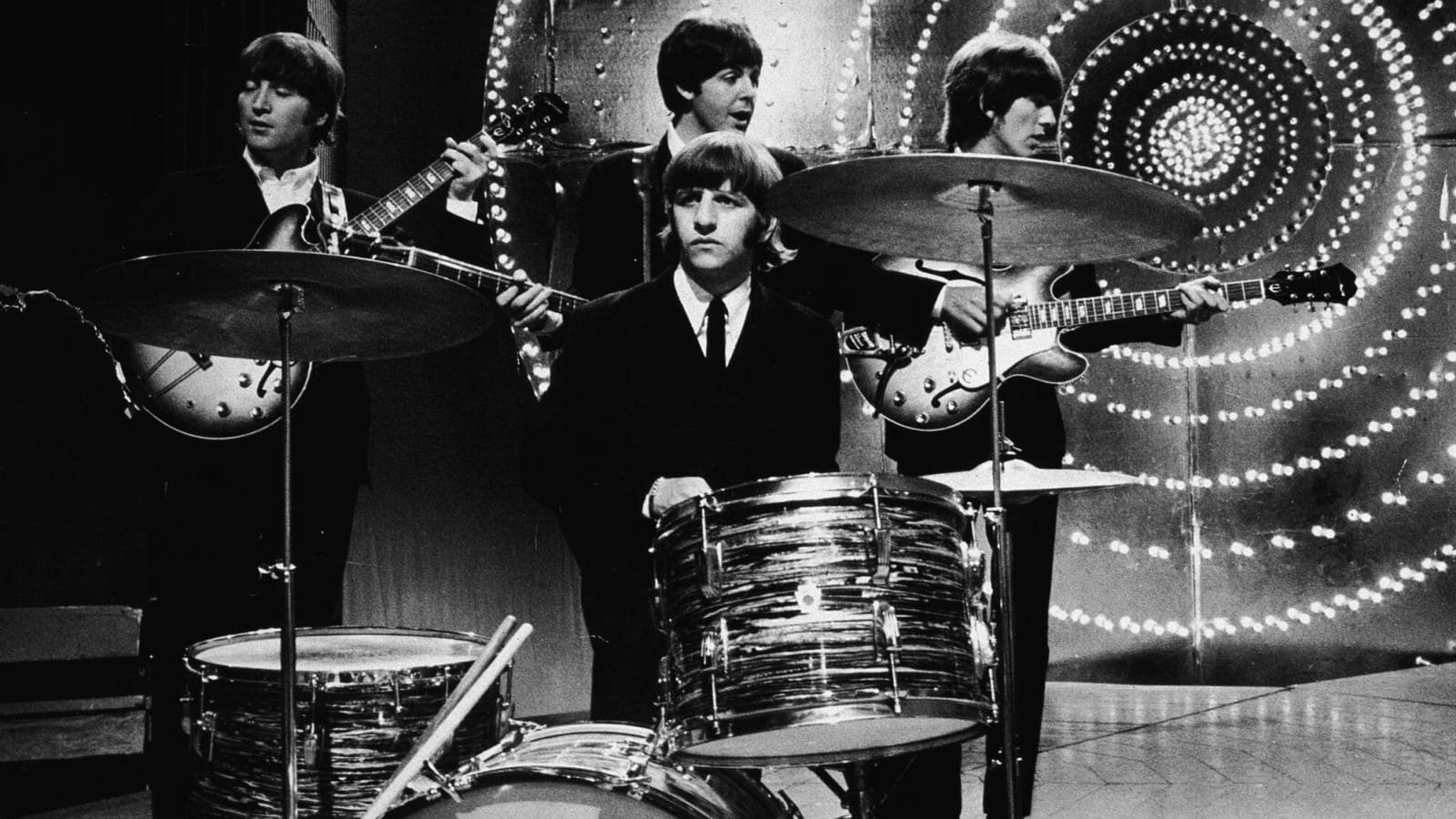
20 ways The Beatles changed the world
Former SPIN writer Chuck Klosterman once came out with a list of bands that weren't overrated or underrated but were just properly rated. He succinctly summed up The Beatles: "The Beatles are generally seen as the single most important rock band of all time because they wrote all the best songs. Since both of these facts are true, the Beatles are rated properly."
The de facto ground zero from which contemporary rock and pop culture emerged, The Beatles did a few things better than their peers and even did a few things no one had yet conceived of. Thus, let's celebrate the 20 ways that The Beatles changed the world.
They created the first-ever rock music videos

Back in the day, most music artists could have legendary performances filmed on pre-built sets of late-night and variety shows, but outside of that, the best place to catch them would be in concert or on the radio. The Beatles' first film, A Hard Day's Night, had sequences designed to highlight certain songs, but the Fab Four wanted to push the idea of art and marketing even further and filmed their own performance clips for "Day Tripper" and "We Can Work It Out."
They would go on to film several more. Still, these standalone, audience-free film experiments centered around new songs predicted the music video era, proving another reason why they were ahead of their time.
They led the charge of the British Invasion, giving rise to a new type of British pop culture

Before the British Invasion, there was good old-fashioned rock and roll. While many point to the likes of Elvis and Little Richard as acts that helped kickstart the worldwide obsession with the genre, British kids growing up on those records eventually wanted to make their own. In late 1963, the Beatles' popularity proved so overwhelming that news programs ran stories on them.
Following their legendary Ed Sullivan Show performance in 1964, America was consumed by "Beatlemania," which kicked open the floodgates for acts like The Kinks, The Rolling Stones, Dusty Springfield, and The Who to make global pop culture inroads. Even The Fab Four's home city of Liverpool quickly became a popular tourist destination, generating a global fascination with everything British.
They even broke rules on what album covers could look like
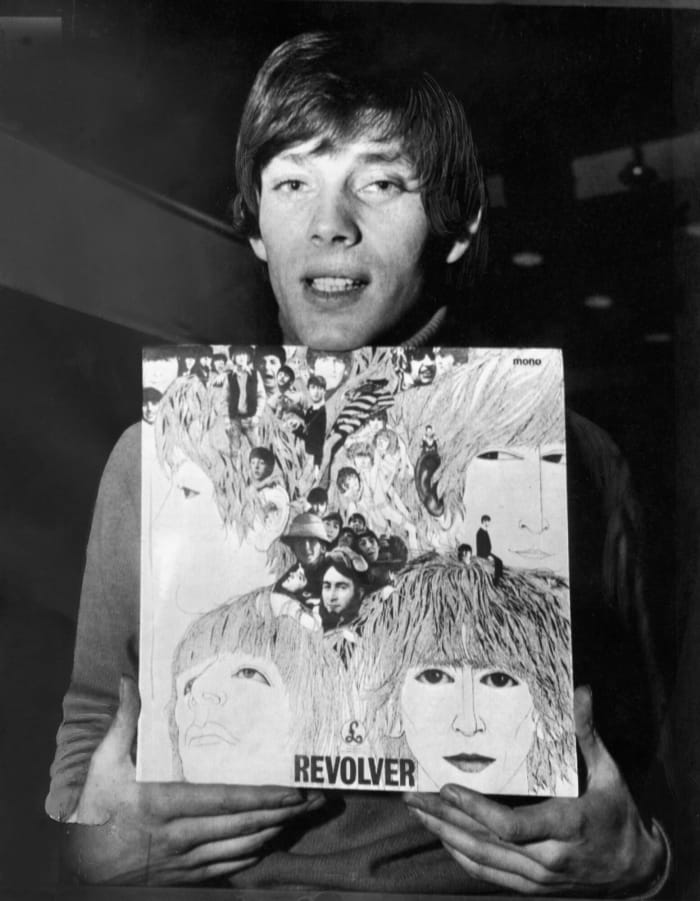
In the early days of the record industry, album covers would often be a photo of the artist accompanied by some text. Maybe there'd be a landscape if it was a classical record, but by and large, LP artwork was pretty predictable.
While the bloody butcher cover of the 1966 compilation Yesterday and Today proved too extreme for the times, the line-drawn art for Revolver and pop collage for Sgt. Peppers changed notions of what could be done with the medium. Most infamously, The Beatles' 1968's self-titled double-disc effort was given the most radical album cover yet: Nothing but a white, blank surface. This became such a cultural touchstone that people still call this record "The White Album."
They were masters at marketing

At the peak of Beatlemania, merchandise of John, Paul, Ringo, and George was rampant and remains hugely collectible to this day. Yet, even after their disbandment in 1970, the band's company, Apple Corps Limited, managed to usher in their legacy into wild new ways. For each new decade, they found unique and innovative ways to bring the group's sound to a whole new generation of listeners.
The mid-'90s saw the release of the three-part Anthology series and documentary, showing fans oodles of outtakes and behind-the-scenes footage. The 2000 compilation 1 merely put all their chart-toppers on a single CD, selling over 31 million copies. In 2006, their Cirque du Soleil show Love premiered. Even in 2021, there was something new to say, as Peter Jackson's Get Back documentary won universal acclaim for showing sides of the band using raw footage. Even if you think you know their catalog and story, there will always be new facets to market and repackage.
They used their platform to advance political causes

While "rock" music could sometimes be viewed as anti-establishment, The Beatles used their platform to explore political themes — from somewhat tongue-in-cheek ("Back in the U.S.S.R.," "Taxman") to genuinely heartfelt ("Blackbird,' which is often viewed through the lens of the contemporary civil rights movement). While some politicians in the U.K. tried hard to court the group to their side, John Lennon's solo career and marriage to Yoko Ono turned him into an activist, wielding his celebrity to highlight injustices and causes near to his heart.
They changed how records were produced

The Beatles retired from touring fairly early in their careers (1966), which was surprising given how financially lucrative touring tends to be. Instead, with the help of producer and overall sonic scientist George Martin, the band treated the recording studio like an instrument, finding wild new ways to create never-before-heard sounds. They reversed instrument tracks, dampened the drums, had multi-layered vocals at wild tones, and used various instruments not often used on Western pop recordings. Their willingness to experiment sonically further highlighted how good the songs were structurally. Almost every song recording you hear today is indebted to the Beatles' innovation, whether its makers know it or not.
They starred in and soundtracked movies that rewrote the rules of rock cinema

Rock stars and movieplexes were nothing new when The Fab Four got big. Ricky Nelson turned his screen notoriety into chart-topping success, and Elvis Presley's movies came out a dime-a-dozen. (They were mostly schlock, but movie-goers still showed up and bought the soundtracks.) Yet, 1963's A Hard Day's Night went more meta than Elvis' filmography, as the band played "The Beatles" but in heightened, fictionalized versions of themselves, showcasing their goofy personalities and comic timing. It didn't hurt that the resulting soundtrack is considered one of their finest pre-Rubber Soul offerings, and the film has since changed how rock musicians and cinema intertwine. (The 1965 Help! soundtrack, however, was infinitely better than its movie counterpart.)
They stuck their necks out for racial justice

In 1964, The Beatles were slated to play the Gator Bowl in Jacksonville, Florida, but initially refused to upon finding out that the crowd was segregated. "We never play to segregated audiences, and we aren't going to start now. I'd sooner lose our appearance money," Lennon stated then (h/t NPR). The venue ultimately relented and allowed the crowd to mix, but The Beatles didn't stop there.
Often covering Motown hits and citing their love of great soul singers in the press, the band requested the legendary Mary Wells to open for them during their U.K. dates. Later, Esther Phillips joined them for dates following the success of her cover of "And I Love Him."
They rewrote the rules of pop music success

The date is etched in history: April 4, 1964. That's the day the Beatles pulled off the unprecedented feat of occupying the top-five slots of the Billboard Hot 100. Around this time in Australia, they occupied six slots of their Top 10. One week in Canada, it was nine of those 10 slots. They routinely ended most years of their existence by having the U.K.'s best-selling album, shattered attendance records during the years that they toured, and once held a record for having six consecutive chart-toppers. While many of those records have been exceeded by various artists, The Beatles were the single entity to establish such envelope-pushing in the first place, a testament to their cultural force.
They created their own record label, upending the established record industry

While the Fab Four are famously associated with Capitol Records and EMI, you don't become a world-conquering force like The Beatles without some glorious caveats. One of them was the creation of Apple Records, a home that allowed them to get as creative as they wanted without having to answer to as many people in suits. While Apple Records (and its avant-garde subsidiary, Zapple) housed Beatles' projects, it also allowed the group to help prop up what they viewed as deserving talent, giving a major platform to the likes of Mary Hopkin, friend-of-the-band Billy Preston, the amazing Badfinger, and one squirrely young folk artist named James Taylor.
They helped push the avant-garde into the mainstream with their experiments and wild collaborators
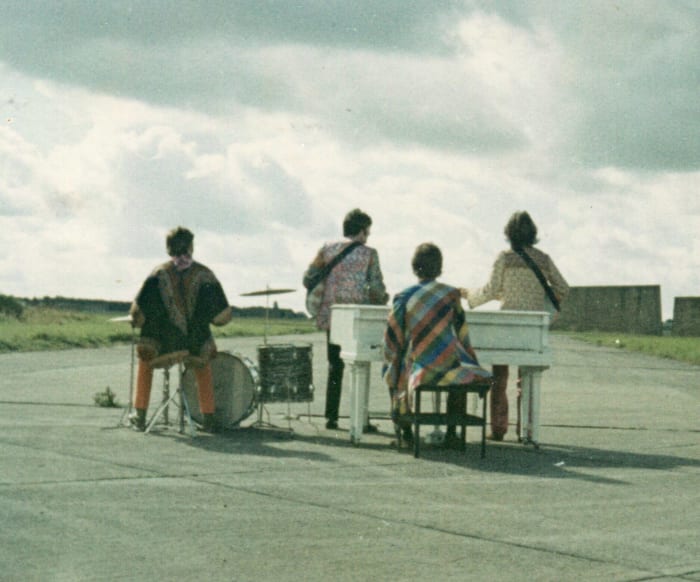
As much as The Beatles experimented in the recording studio to produce some out-there sounds and textures, they didn't stop at mere "pop songs." They went to the furthest reaches of known genre, culminating in the release of 1968's "Revolution 9." An eight-minute avant-garde slice of found sounds and musique concrète (housed on "The White Album" where any number of genres were wrangled), "Revolution 9" confounded many and delighted even more.
It was a hard right turn for a group already bending their creativity into new shapes, but when released on an album for a group as popular as The Beatles, it too etched itself into public consciousness, elevating the status of Lennon's known muse Yoko Ono and soon introducing the world to genres they may not have even known about.
They became somewhat unintentional fashion icons
Many others had worn the Baba boot before John, Paul, George, and Ringo did, but those prior champions weren't in The Beatles. Once Beatlemania was in full swing, the four Liverpool lads with the mop-top hair started noticing a bunch of fans getting similar haircuts. That high-heeled Baba boot was soon colloquially rekindled as "the Beatle boot" because everyone wanted to wear them. As their "boy band" era slowly phased out, each member began adopting his distinct style and look, setting clothing and fashion trends every decade.
Their world-curious ways helped bring new instruments into the cultural conversation
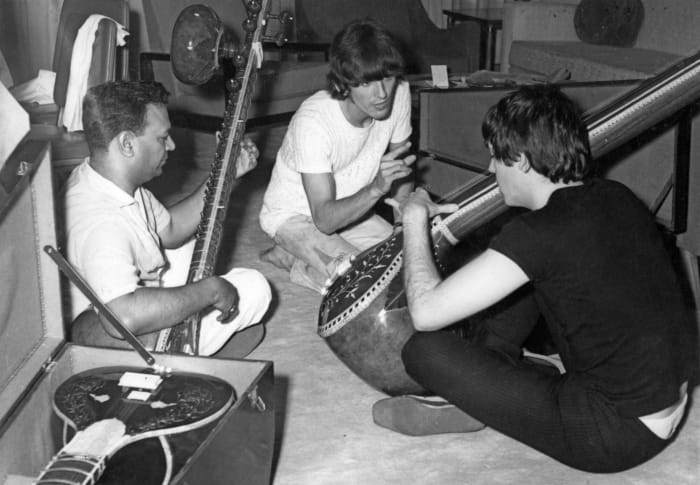
The Beatles' trip to India has been widely accepted as a large turning point for their sound, aesthetic, and overall direction. George Harrison, in particular, became fascinated by the sitar. While he signed and produced master of the instrument Ravi Shankar for Apple Records, it was Harrison's use of sitar on "Norwegian Wood" that proved to be a gateway for Western audiences.
Similarly, Harrison was one of the first people in the U.K. to get their hands on a powerful new thing called the Moog synthesizer. While its function was archaic (you could only hold down a single note at a time), it was still used prominently on legendary tracks like "Here Comes the Sun" and "I Want You (She's So Heavy)." Their use of a Mellotron in "Strawberry Fields Forever" also shook up the popular instrument repertoire.
They redefined what a "solo career" after departing a band

Before The Beatles, solo careers outside of bands weren't really a thing. You were either a member of a band or a solo star from the get-go. Once The Beatles disbanded, their sheer popularity and cultural goodwill helped propel each of them into solo success (and not for nothing, 1970 was also the year Diana Ross went solo).
Ringo dropped the first album in March of 1970, and Paul's McCartney came out a few weeks before the final Beatles record, Let It Be, dropped in May 1970. Harrison's All Things Must Pass arrived in November of that year, while Lennon's debut effort with the Plastic Ono Band landed that December.
Even more remarkable is how all their solo successes were unique. Ringo was the goofy country-pop troubadour, and Harrison paved new ground with his distinct and emotive songwriting. Lennon alternated between trashy joke records and earnest pleas in equal measure, while McCartney was the rock & roll chameleon, changing with the times and netting hits even in the 2010s.
They created one of the first true rock and roll concept albums

For the longest time, rock and pop albums were considered a collection of potential singles. Nothing too fancy, and rarely if ever, thematic. This changed in the 1950s when Frank Sinatra started releasing records like 1955's In the Wee Small Hours, in which all songs had a consistent, melancholy tone. While The Beach Boys' Pet Sounds proved to lead the rock era into the land of the concept album with a record that proved to be somewhat autobiographical, Sgt. Pepper's Lonely Hearts Club Band was a quantum leap ahead of everyone else.
With the band playing a band that wasn't themselves, this meta-commentary was far more intricate than the caricatures they portrayed on A Hard Day's Night. Ringo played the leading vocalist role of Billy Shears, but he was just one part of a strange intertwining narrative that would be hard to digest were it not baked into some of the best songs ever recorded.
They changed the way rock music was critically assessed

While Elvis, The Supremes, and The Beatles are now considered the building blocks upon which all popular music is built, this wasn't always the case. Music critics existed well before "Five O'Clock Rock" hit the airwaves but weren't reviewing rock & roll before the genre was established. Elvis was popular but easy to dismiss due to his terrible film career. But once The Beatles arrived, it was impossible to ignore their incredible sense of craft. The Beatles scored the first-ever Album of the Year nomination at the Grammys (for Help!) and were the first rock act ever to win that gong (for Sgt. Pepper's). With the British Invasion came the rise of the rock critic, and it's those same critics that help keep The Beatles' legacy well afloat.
They helped usher in the counterculture movement

In August 1964, the Beatles met Bob Dylan, who then introduced the Beatles to weed. The counterculture movement of the '60s was starting to spread, and while hippies sought to obtain a higher consciousness, so did these four young men from Liverpool. It started with a boppy jaunt called "The Word" from 1965's Rubber Soul that expressed their earnest plea for universal love, but that soon expanded out into trippy songs with ornate instrumentation and even a too-strange-for-words animated film called Yellow Submarine. As the use of psychedelics started to become popular, the Fab Four were smack dab in the middle of it, giving fans the best soundtracks for tripping and wild visuals to match. Music critic Jim DeRogatis once cited them as the "Acid Apostles of the New Age." Daytrippin'.
They were unafraid to court controversy and showed the world how to overcome it
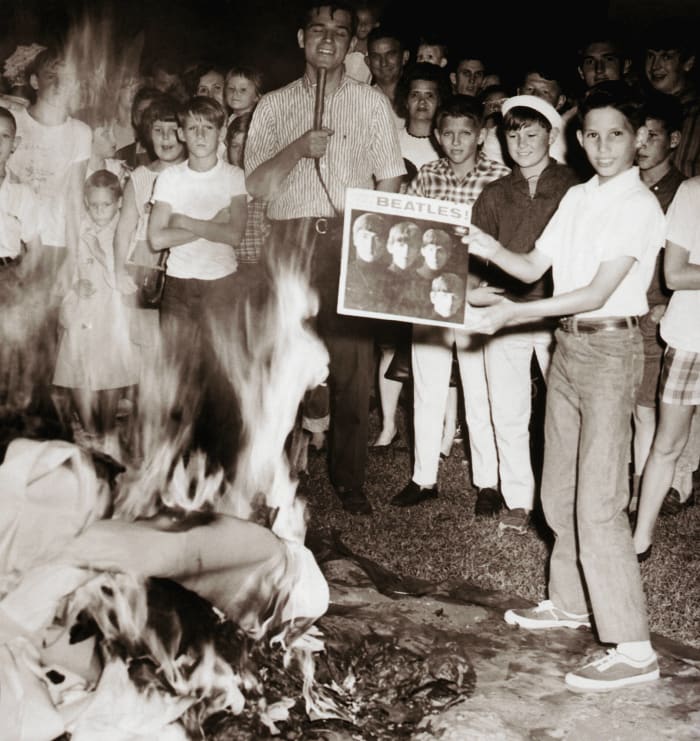
When you're the biggest band on the planet, everything you do and say is held up under a microscope, and John Lennon's offhanded comment in the spring of 1966 about how The Beatles were becoming "more popular than Jesus" sparked outrage. In his original quote and subsequent press conferences, Lennon never implied that the Beatles were more important than Jesus, but the protests happened nonetheless. While controversy and rock certainly aren't strangers to each other, Lennon's remarks proved how big the Beatles were and how much they could withstand.
Their 'Ed Sullivan' taping caused a cultural shift

The Ed Sullivan Theater in Studio 50 holds 728 audience members for a live taping. When Elvis Presley performed in 1957, CBS received over 7,000 requests for tickets. When The Beatles were set to appear in 1964, the studio received over 50,000 requests. Demand was huge, but the impact was bigger than anyone could have anticipated: over 73 million people tuned in to the broadcast, and for many, the mania, energy, and charm that burst out of the TV screens flicked a switch in their brain that made them want to become rockstars. Billy Joel, Nancy Wilson, Tom Petty, and so many more have cited that specific broadcast as the reason they wanted to get into music in the first place, and the taping itself has become such a piece of pop culture legacy that everyone from OutKast to BTS has paid homage to it.
They upended the established notion that B-sides were "lesser songs"
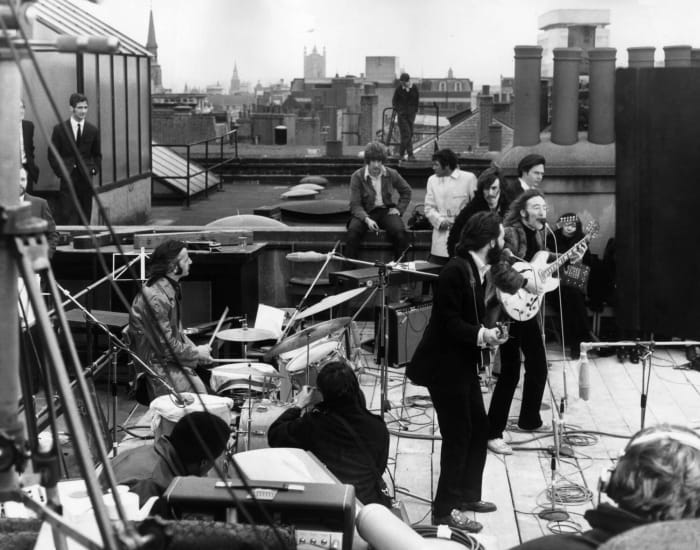
In the early rock eras, there were albums, there were singles, and there were B-sides. While albums and singles were sometimes separate entities, radio made the single more important, and most albums contained the singles, but maybe not these stray dog recordings not deemed worthy enough for an album release proper.
The Beatles counteracted that narrative by putting some of their best work on the backs of giant radio smashes, creating a secret discography that ran parallel to their main one. Yes, their double A-sides were also wildly successful, but if we had to pick the best Beatles flips, we'd have to go with 1966's "Rain" and 1969's extraordinary "Don't Let Me Down."
Evan Sawdey is the Interviews Editor at PopMatters and is the host of The Chartographers, a music-ranking podcast for pop music nerds. He lives in Chicago with his wonderful husband and can be found on Twitter at @SawdEye.
More must-reads:
Trending in Entertainment
Customize Your Newsletter
 +
+
Get the latest news and rumors, customized to your favorite sports and teams. Emailed daily. Always free!
Use of this website (including any and all parts and
components) constitutes your acceptance of these
Terms of Service and Privacy Policy.

